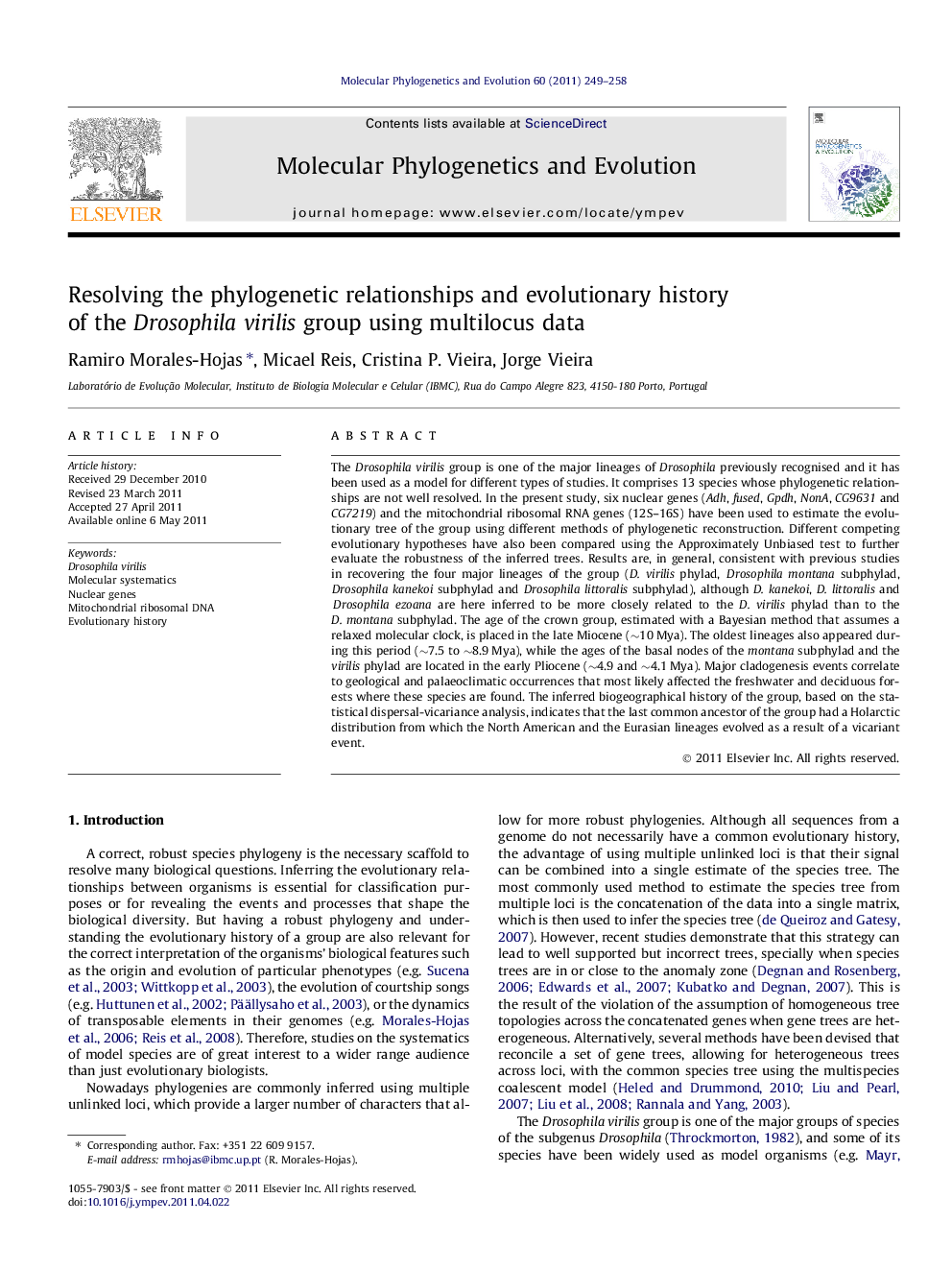| کد مقاله | کد نشریه | سال انتشار | مقاله انگلیسی | نسخه تمام متن |
|---|---|---|---|---|
| 2834237 | 1164300 | 2011 | 10 صفحه PDF | دانلود رایگان |

The Drosophila virilis group is one of the major lineages of Drosophila previously recognised and it has been used as a model for different types of studies. It comprises 13 species whose phylogenetic relationships are not well resolved. In the present study, six nuclear genes (Adh, fused, Gpdh, NonA, CG9631 and CG7219) and the mitochondrial ribosomal RNA genes (12S–16S) have been used to estimate the evolutionary tree of the group using different methods of phylogenetic reconstruction. Different competing evolutionary hypotheses have also been compared using the Approximately Unbiased test to further evaluate the robustness of the inferred trees. Results are, in general, consistent with previous studies in recovering the four major lineages of the group (D. virilis phylad, Drosophila montana subphylad, Drosophila kanekoi subphylad and Drosophila littoralis subphylad), although D. kanekoi, D. littoralis and Drosophila ezoana are here inferred to be more closely related to the D. virilis phylad than to the D. montana subphylad. The age of the crown group, estimated with a Bayesian method that assumes a relaxed molecular clock, is placed in the late Miocene (∼10 Mya). The oldest lineages also appeared during this period (∼7.5 to ∼8.9 Mya), while the ages of the basal nodes of the montana subphylad and the virilis phylad are located in the early Pliocene (∼4.9 and ∼4.1 Mya). Major cladogenesis events correlate to geological and palaeoclimatic occurrences that most likely affected the freshwater and deciduous forests where these species are found. The inferred biogeographical history of the group, based on the statistical dispersal-vicariance analysis, indicates that the last common ancestor of the group had a Holarctic distribution from which the North American and the Eurasian lineages evolved as a result of a vicariant event.
Figure optionsDownload as PowerPoint slideHighlights
► We estimate the phylogeny of the Drosophila virilis group using multilocus data and different reconstruction methods.
► We have dated the phylogeny and inferred the biogeographic history of the group.
► The Drosophila littoralis and Drosophila kanekoi subphylads are monophyletic with the D. virilis phylad.
► The Drosophila montana phylad is polyphyletic.
► Major geologic events correlate well with dates and patterns of cladogenesis.
Journal: Molecular Phylogenetics and Evolution - Volume 60, Issue 2, August 2011, Pages 249–258